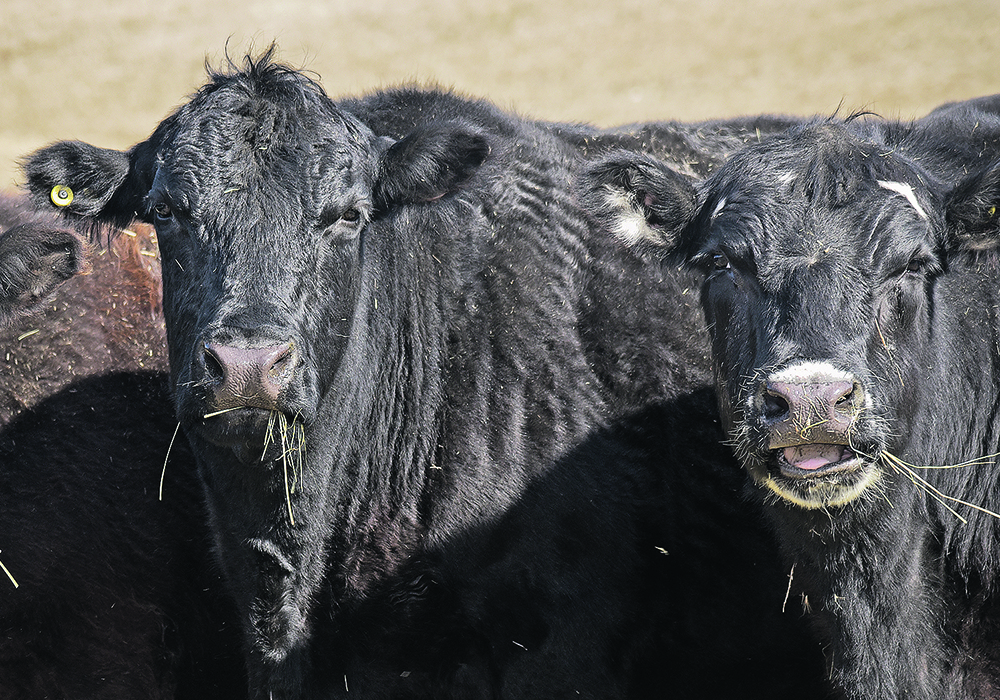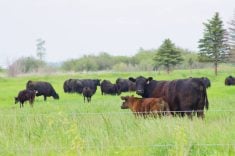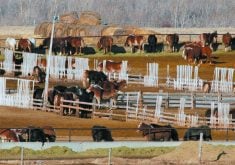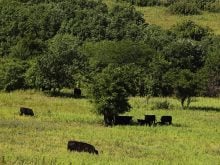Covering the basics of calf care will be especially important for cattle producers if dry conditions continue into spring
MEDICINE HAT — There’s a small measure of relief from dryness heading into spring calving season, but an abnormally warm winter may leave cows in less-than-ideal condition.
Dr. Krista Dayman of Badlands Veterinarian Service said cow body condition is a concern in areas where feed and water may have been tough to access.
“Colostrum intake is going to be really important. It’s always important but colostrum is essentially giving that calf a functional immune system,” said Dayman.
Read Also

Canada told trade crisis solutions in its hands
Canadians and Canadian exporters need to accept that the old rules of trade are over, and open access to the U.S. market may also be over, says the chief financial correspondent for CTV News.
“If they don’t get an adequate amount of colostrum or they’re not supplemented fast enough, it’ll really impact their immune system and will be way more likely to attract illnesses and die.”
Visually inspecting calves to ensure adequate colostrum intake won’t be enough. Dayman said sucking may look normal but it doesn’t tell the whole story.
“Especially calves with heifers that have low body conditions are at high risk of failure of passive transfer where they don’t get enough colostrum and they don’t have an immune system,” she said. “Keeping those critters alive is definitely a challenge.”
It is hard to tell whether colostrum intake is sufficient, according to Melanie Wowk, veterinarian and former Alberta Beef Producers chair.
The dairy industry has made advances in diagnosis of colostrum deficiencies, but collecting blood samples from beef cattle is a different proposition.
Drought may have also put cows into poor condition before calving.
“I’ve seen some groups go through the market — cows that are close to calving — that are being sold that are pretty thin,” said Wowk, who ranches near St. Paul, Alta.
“It poses a problem because you tend to have weaker calves, usually because those cows are protein deficient.”
The issue can have knock-on effects because those cows may take longer to rebreed.
“It takes a lot of energy for girls of all species to have a baby and get back pregnant,” said Wowk.
The lack of feed and associated costs may have put producers in a pinch when it comes to nutrient supplements. Financial pressures have increased due to drought conditions.
Low body condition in cows will be evident during calving if producers see retained placentas or uterine prolapses.
“That could be an indication they are deficient. Not so much for placentas but if they are seeing a lot of prolapses, that could indicate a deficiency in calcium. It’s something to consider in discussions with a veterinarian in designing a mineral program to address that,” Dayman said.
Prolapses were an issue during spring 2023 in the dry southeast corner of Alberta and she anticipates it will be the same this year.
Covering the basics of calf care will be especially important if dry conditions continue into spring.
“Lots of TLC” will be necessary, said Dayman, and “making sure those calves are warm, dry, fed. If they can take care of those things and make sure they have adequate amounts of colostrum, they’ll be off to the races.”
One of few silver linings with dry conditions is reduced scours, a leading cause of death in calves under one month of age. It’s also easier to keep calves warm and dry.
But there is one basic need that Dayman and Wowk both said is the prevalent concern.
“Everybody is worried about the water. If we don’t get rain and on the irrigation side, if we don’t get that water allotment — especially in this area — there are going to be a lot of cows for sale,” said Dayman. “It’s a stressful time for sure.”
While her focus is on animal health, she reminds producers to take care of themselves during calving season, get enough to eat through balanced meals and maintain a good caffeine source.


















